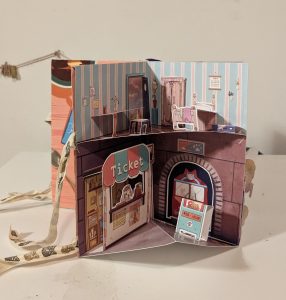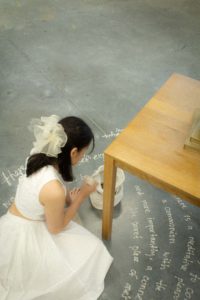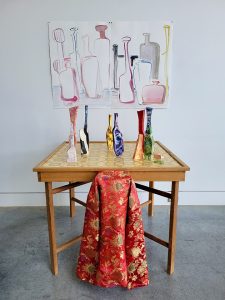ruins/blooms
Dita Basu
See it On Campus: Level 1
Visitor Inforuins/blooms (2024)
porcelain, gauze, cotton thread, muslin, paper, ink
Blooms do not bring me joy anymore, they bloom in warning of the ruins to come
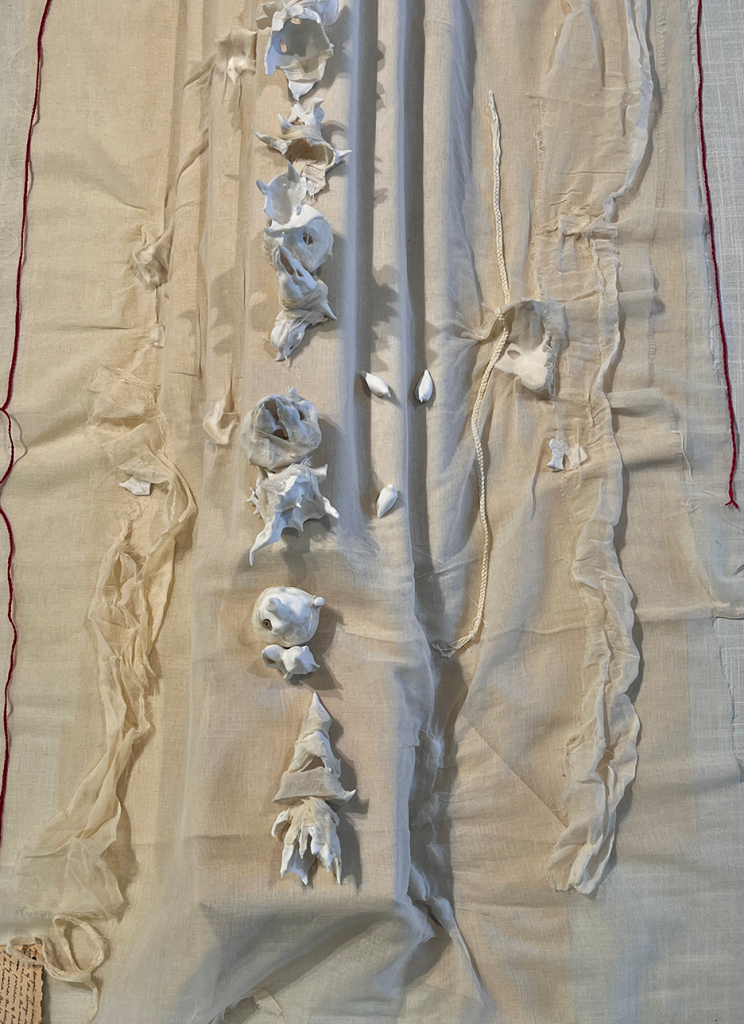
blooms/ruins was created in the wake of the Palestinian genocide of October 2023 and a way to process the loss of human life and culture, an expression of grief and a reaction to bearing witness to the violence of colonization. The work also engages in contemplations of the Bangladeshi genocide of 1971 and the remnants of the Indian partition in1947 as a result of the British colonization.
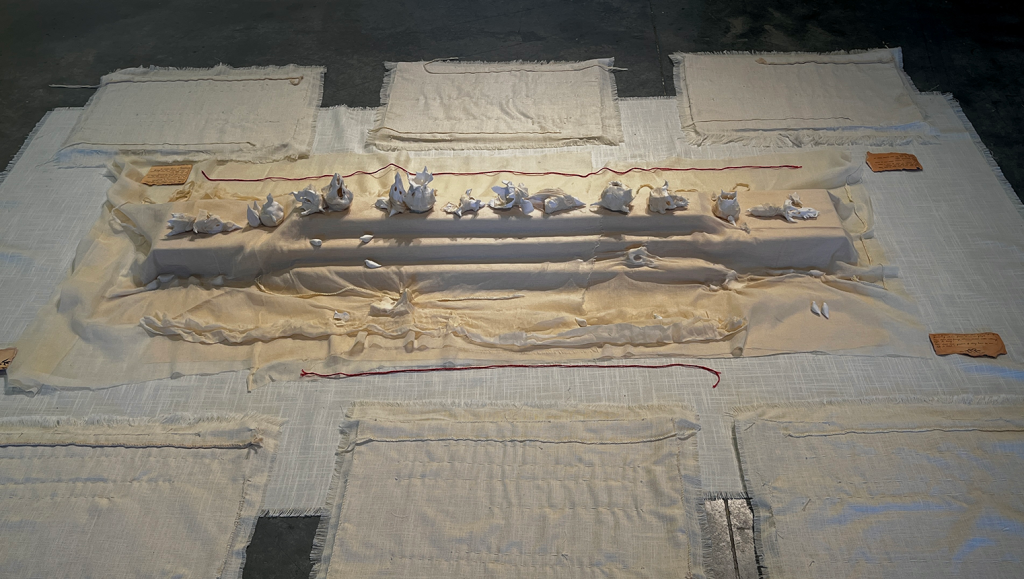
living through an ecological crisis, witnessing genocide, this work was created as a way to process the grief of losing hope in this way of life, losing hope in modernity
I ask you to consider the histories this space holds
This work is currently placed on stolen indigenous land
As a Bengali, my hands carry the intergenerational burden of the damage that was done by the British colonisation and subsequent partition of the Indian subcontinent.
my body carries the scars of the violence, the famines and displacement that my grandparents and great grandparents survived
And as I grieve, I remember that the privilege of grief was stolen from those in Gaza
how does one bury their dead if there is nothing to bury
how does one grieve if hey have no one left to hold
as death tolls in the Gaza strip rise above 34,000 and over 8000 people missing, please take a moment to think of what it means to bear witness
what does it means to think about these stolen lives on stolen land
stolen palestinian land, stolen indigenous land
how do we stop the deep-seated roots of colonial violence in this world and how do we heal from all it has done
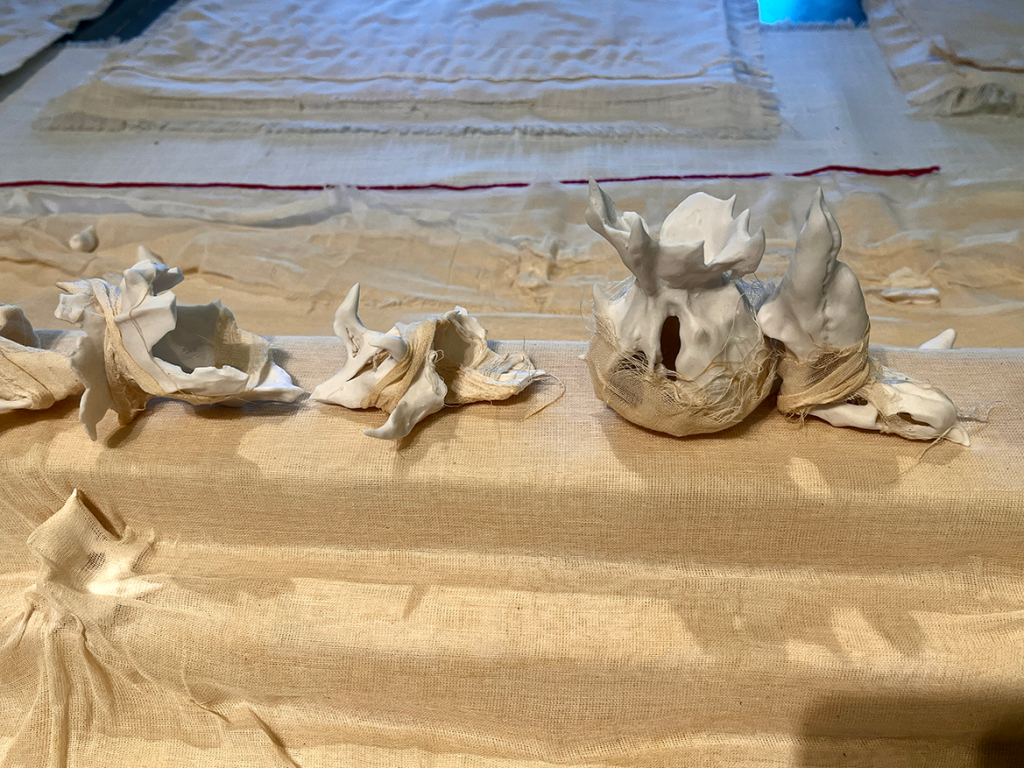
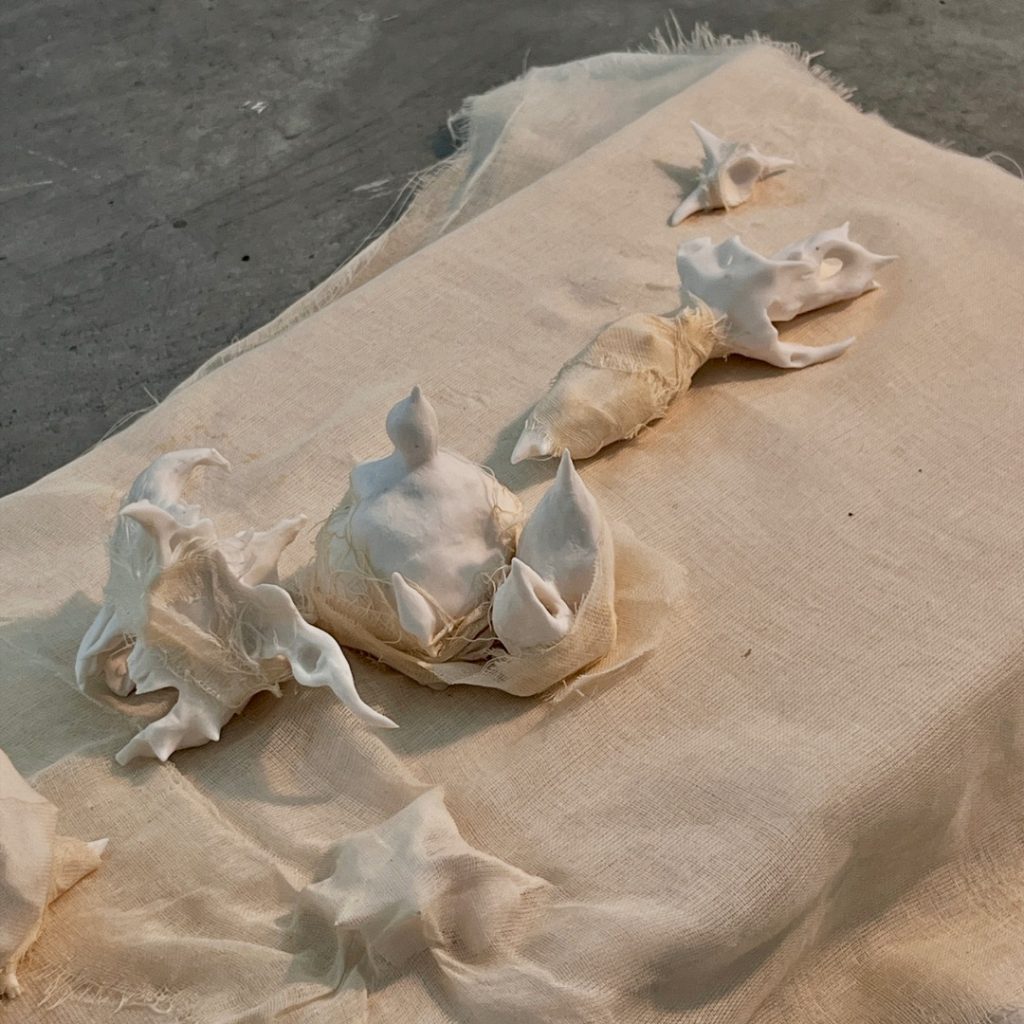
this grief is not simple, this is about a systemic practice of violence and erasure, its about the power structures that uphold these systems, its about reflecting on how we are entangled with these system of power, its about finding ways to untangle ourselves and heal, re-sentisise yourself, ground yourself, learn to care
Other works
tea time, love, languages (2023)
ceramics, cotton thread, paper dyed in black tea and gouache
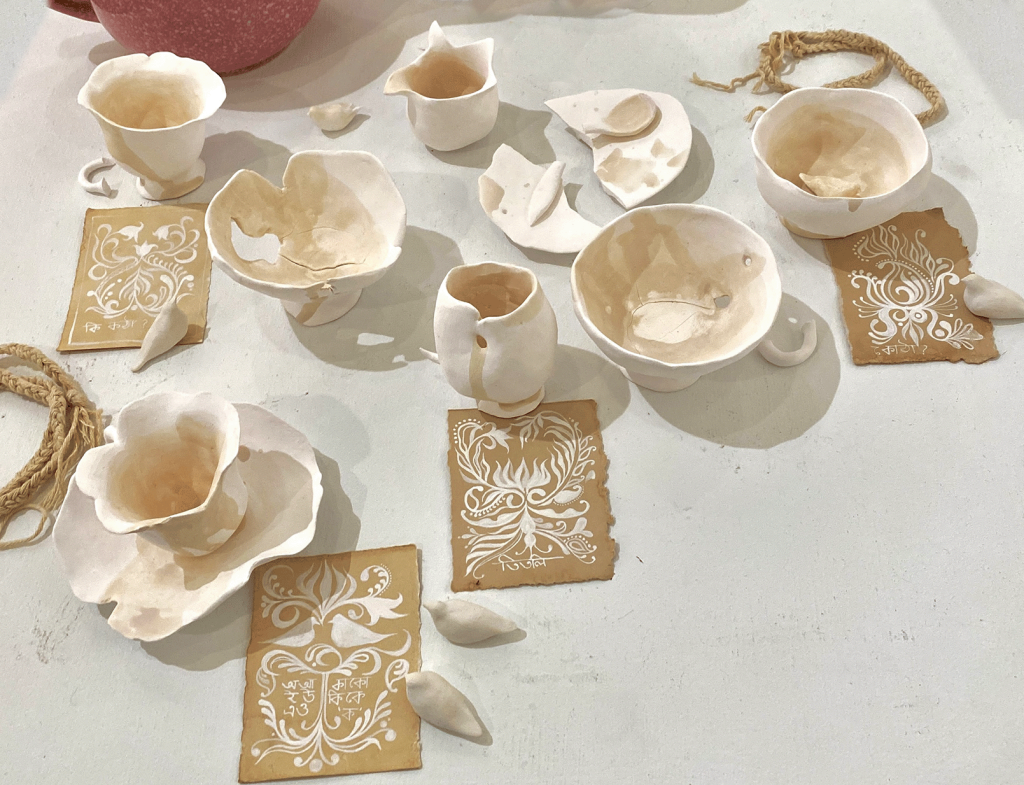
The piece is based on the idea of tea time and its role as an emotional and social exchange.The exchange of south asian cultural values, gendered, racial and otherwise. How does the intergenerational trauma carry itself through the lives of the ones that come after and the emotional wounds it leaves behind. I wanted to express the love and the longing I felt towards my family, while also pondering the broken fragments of our relationship. A personal emotional existence that is entangled in the socio-political burdens of a post colonial society. I think of love and longing, expressions of care, the rituals and languages it translates to. I think of the consumption of tea and the recipes being passed down generations and the cultural weight it holds. I think of healing, physical and emotional, both as an individual and as a culture. The ceramic pieces reflect the delicate nature of hurt and the moments of care sprinkled within them, birds and the care I foster towards them, braiding hair as an act of love and trying to learn a language to communicate love.
Untitled comfort object(2023)
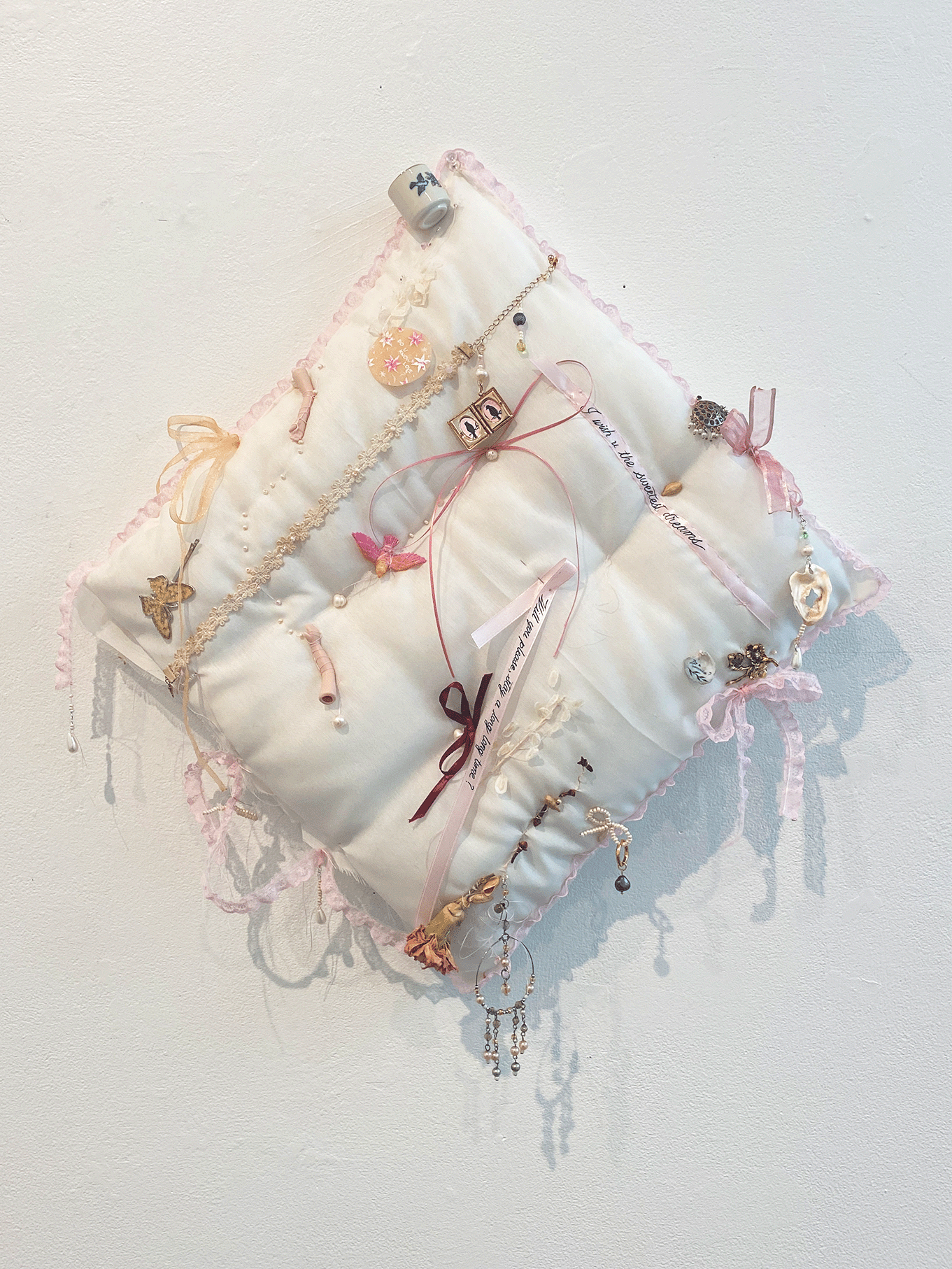
pink lace, pink ribbon, pillow stuffing, white found fabric, pink polyester thread, Gift ribbon(red), ribbon(gold), pendant, broken Jewellery, mini ceramic cup, butterfly detail hairpin, porcelain doll hands, plastic painted bird ,lace flowers, earring, seashell , pearl (purple), dried carnation, cardamom pods, cloves, pearls, white beads, clear beads, gold wire, acrylic paint
comfort object explores ideas of comfort, nostalgia, love, and memories, stored in objects and aesthetics. Pieces of someone’s life, sewed together in a visual poetry. A mourning of the love this person once believed in, holding on dearly to its broken pieces. Perhaps a love they hold towards someone else or themselves.
What roles do romanticisms, ornamentations and femininity play in a cultural context of being a south asian woman, where objects and means of beauty are passed down generations and play an important part of community and love shared between women.
As I creating this work I was thinking about the complexity of feminine relationships and the comfort and emotional depth that space holds, in friendship and in romantic love. I also think about romanticising and escaping in idealised colonial aesthetics as a cocoon away from the complex realities of queer love as a woman of colour; away from the powerlessness and smallness of existing in a world that exists for power and capital over human connection, kindness and care



